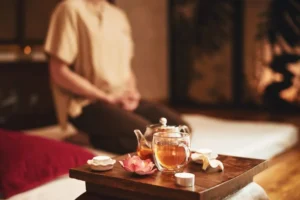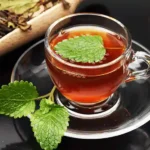Top Tea Rituals Around the World– One of the things that makes tea so unique compared to other things, is the history of tea. Tea rituals offer a unique insight into the diverse histories of the world. The first cup of tea originated in China in 2737 BCE and it is enjoyed all over the world. Tea has become the epitome of many cultural rituals.
Tea is the second most-consumed beverage globally behind water. In today’s world trends come and go, and tea traditions and rituals have withstood the test of time. In every corner of the world, tea is synonymous with feelings of comfort, hospitality, gratitude, and tradition.
The beliefs about tea in different countries are just as perfect. A little warm cup of tea brimming with bliss helps to bond with people who come from different cultures. Let’s study the Top Tea Rituals Around the World.

List of Top Tea Rituals Around the World
Here, is a list of Top Tea Rituals around the world:
Tea ritual of India
In India Tea has a very unique and ancient history. Tea first appears in the ancient times of Ramayana. Today, tea rituals are part of every Indian daily life. You will find a tea stall at every corner of major cities and every area in India has its version of tea.
People of different areas prefer different flavors of tea such as Delhi people prefer ‘malai chai’ Mumbaikars prefer ‘kadak masala chai’ people from north India prefer ‘kullad chai’. In north India, ginger is an ingredient and has been used in milk-based drinks for centuries.
Tea tradition of Japan
In Japan, tea remained an imperial drink. Japan has a very ritualistic process of preparing tea with the feeling of tranquility and humanity. In modern days tea ceremony is more often a hobby and tourist attraction, Japan has strict rules and structured regulations for tea ceremonies.
Hotels, gardens, and community centers are a few places where you can enjoy authentic tea in Japan. Tea ceremonies take place in a traditional Japanese room with tatami mats with varying degrees of formality. Japanese green tea is the primary choice of people, black tea is also what people have. Japanese tea accompanies wagashi and is served in Japanese tea cups.
Turkish Tea Ritual
Turkish tea known as cay, is strong black tea brewed into a two-tiered tea pot called caydanlik. The tea is used to have traditional Turkish sweets. The rise of tea’s domestic production, increasing affordability, and opening of tea houses made tea a national stable. Turks like to drink tea at any time of day and serve it to guests as a symbol of hospitality, similar to many other rituals around the world.
Tibetan Tea Ritual
Tibetan tea rituals have been going on for thousands of years. Tea was introduced by China in Tibet during China’s Tang Dynasty. Tibetans prefer butter tea, more than just a time-honored ritual, For people who live in cold mountains the warmth and hydration benefits of tea help to stave off cold and decrease the risk of dehydration. Butter tea is an important part of Tibetan tradition and part of hospitality. Making butter tea is a time-consuming process but using loose tea leaves and blenders makes it more quick and effective.
Taiwanese Tea Tradition
Taiwanese bubble tea is gaining popularity worldwide. Some call it bubble tea but nowadays it is known as boba tea. Taiwanese bubble tea is all the craze with its delicious chewy balls, a typical sweet, milky tea. Tapioca balls have been common in Taiwanese desserts and combined with tea-based beverages, these ingredients together carve new flavors and unique categories of milky dessert.
American tea Tradition
American iced tea is consumed by around 70-80% of the USA. Tea culture is also a trend in the USA when tea was introduced by the British as a steeped beverage. However, iced tea is widely consumed during summer and America dominates the ice tea trend. Ice tea became an alcoholic beverage at least in colonial times. And today black tea is America’s favorite along with green tea.
Thailand’s Cha Yen
Thailand has significant trade with China, and Chinese immigrants brought their tea culture including the use of black leaves in China. However, due to the hot climate of Thailand, people adapt tea according to their suits and preferences and weather.
Thai people mostly consumed iced tea, strong and highly aromatic black tea. To enhance the flavors spices like star anise, crushed tamarind seeds, and orange blossom water are included during brewing this tea. These ingredients give an authentic and unique flavor to the taste of tea, it varies based on the personal preferences of the people and area.
Tea tradition of South Africa
Tea was introduced in South Africa in 1850 and imported from Calcutta. In West Africa, the tea ceremony is known by the name of “Attaya”. Every Attaya consists of three rounds of tea drinks, the first round is very bitter and represents the beginning and pain of life. The second round is sweeter with a flavor of mint, symbolizing the sweetness of mid-life during marriage or love. The third round of weak tea represents old age and illness.
Conclusion
Tea is one of the unique commodities in agriculture that has a rich history. i has developed its unique flavors, much like ice cream and sandwiches. Tea is a perfect time to share a moment with family and friends. However, a cup of tea can be a transformative experience wherever you can to find yourself. Chance to have a tea ceremony may not be an opportunity for everyone in today’s busy world.
FREQUENTLY ASKED QUESTIONS (FAQS)
1) What attracts the people most in the tea ceremony?
The practice lies more in the re-creation process, learning and refining skills take on a whole new dimension. Apart from this, tea ceremonies help to preserve your culture and keep you connected to your roots. You can build strong and enduring relationships with people while having a warm cup of tea.
2)What is the value of practicing tea rituals?
We obtain deeper learning from cultural rituals. Understanding the tea rituals is really understanding the basic moral principles that are basic for human existence. Engaging in the tea ceremonies helps to get along with new people and helps to share a moment with friends and family.
3)What is the etiquette for attending a tea ceremony?
Always show up on time, talk to others while chatting sessions begin, and always dress authentically according to the occasion.
4)For what purposes do people still perform tea ceremonies today?
The purpose of performing tea ceremonies is to create bonding between the guests and it also gains inner peace. Tea ceremonies have always been an important part of the culture, it is a sign of warmth and hospitality.





